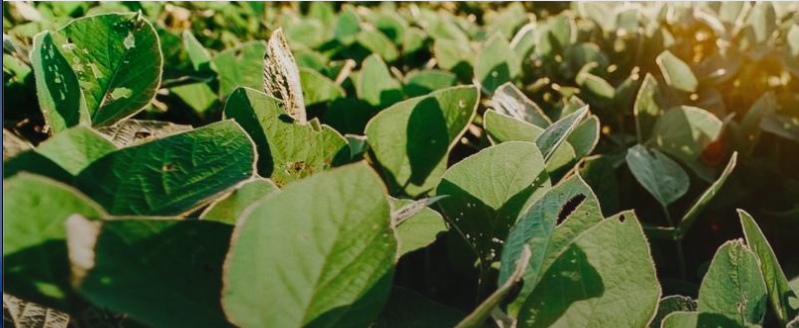Analyzing entire plantations for weed or disease infestation in a short time, with the use of a drone, a hyperspectral camera and a lot of software. Igor Ivanov, co-founder of Gamaya talks to us in an interview about the great potential behind it.
You belong to one of the most promising start-ups in this field and regularly win awards. Can you explain your technology in four USPs?
High-value in-depth insights into crop by providing a diagnosis and actionable advice. We utilize a high-tech hyperspectral camera, which is small in size and light enough to be carried by a drone. We are the only company worldwide applying hyperspectral-based imaging in a large and economically viable way. Where others rely on standard imaging techniques, we make use of the unique properties of hyperspectral imaging which, amongst other things, allows for weed, virus and disease diagnosis without any sampling. This exceptional information allows us to provide advice on how, when and where to act best, to anticipate minimizing input (e.g. fertilizers, chemicals, etc.), reduce devastation and increase yields.
Scalable. Our advanced HSI-enabled Crop Insight makes use of multiple satellite imagery sources. It thereby allows for true large-scale crop analysis which is also subject to constant improvement facilitated by our AI algorithm.
Cost-effective. We are able to offer comprehensive, in-depth crop insights at low costs by replacing high-cost drone-based imaging by satellite imaging and data. While we rely on satellite imagery, we will also maintain our detailed insights provided by our hyperspectral imaging AI camera models.
Comprehensive. By combining the advantage of scalable satellite data with our hyperspectral-based crop models, we can provide insights across a large number of factors, producing actionable advice based on analysis. So we provide customers with a perfect all-round crop analytics solution. And because our information is retrieved from global satellite data, our models allow for higher accuracy by overcoming any discrepancies that happen in manual sampling.
Your technology is currently tailored to help cultivation of sugar and soybeans. Sugar cane is the worlds number one crop in terms of production size, soybean is number six. Do you have any plans to expand the crop portfolio to other produce?
Currently, we have the following portfolio of products for sugarcane:
- Automated planting gap diagnostics and line detection
- Accurate in-field detection and mapping of weeds
- Large-scale monitoring of weeds and other infestations
- Accurate harvest line detection for autopilot machinery
- All-round performance indicators and crop growth monitoring and alert systems
Some of these products use drone imagery (planting gaps diagnostics) and others rely on satellite imagery (i.e. anomaly detection). We plan to provide more and more satellite-based products to ensure the scalability of our services. In terms of other crops and localities, we continue to follow a partnership approach, so that future expansion is defined following specific criteria. These include specific partner needs, market potential, uniqueness of our solutions provided and many more.
Can you outline the effectiveness of your technology using a specific example?
Yes, of course. Once we provide a map of planting gaps and the statistics associated with it, a sugarcane grower can now decide to completely replant a field if the economic benefits of continuing growing sugarcane in a specific area turns out to be lower than the actual cost of replanting it.
Another highly useful tool is to correct ongoing planting operations by increasing planting efficiency based on the analysis of planting gaps for planted fields. Typically in Brazil, the average life-span of a sugarcane field is five years. The average number of cuts is also five until that field is replanted. The most significant impact is achieved when a sugarcane grower is able to replant missing sugarcane plants to increase the actual number of cuts. Hence, by extending the life-span of his field, a sugarcane grower can influence his productivity directly and to his financial advantage.
And having access to a map of weed infestation and insights into major types of weeds, a sugarcane grower can then apply weed-specific herbicides in a much more efficient and targeted manner. Targeted spraying of field can be carried out using drones, variable-rate spraying machinery or manually.
Big Data and AI are making headway in the agricultural sector. With your technology for example, the use of pesticides can be greatly reduced or fertilization is made possible in a targeted manner – does this mean that there can be an increase of efficiency in almost all processes?
In general, we categorize the benefits under following categories:
- Cost reduction due to optimal usage of resources (crop inputs, water, manual labor, etc.)
- Yield increase due to targeted and timely crop treatment and better usage of crop inputs (nutrients), etc.
- Reduction of losses related to diseases, pests and weeds
Below are examples of our value proposition for three of our leading products, which show how efficiencies can be improved in almost any process, especially in an industrial farming context.
A solution to diagnose and classify weeds, map out planting gaps and estimate the best harvesting time for sugarcane:
- Reduction of losses up-to 10-15%, extending the longevity of crop life cycle
- Reduced manual scouting costs
- An up to 20-40% decrease in weed-related losses
- Optimal sugar content
A solution to diagnose nematodes presence at different infestation levels in soybean fields:
- Up to 20% decrease in yield losses on 25-50% of the field area
- Benefit delivered to the grower up to $37 per/ha
A solution to diagnose macro-nutrients deficiency in corn fields during the growth stage in corn:
5% yield increase
Reduction of chemical usage up-to 30%
10% cost reduction
You had your market launch in Brazil – a big country with large industrial farms – Is your technology an interesting investment for countries with smaller agricultural sectors or smaller farms?
Brazil is our first target market for a number of reasons (2nd largest ag producer, consolidation of the industry, the industrialization of ag production, tropical environment to allow a continuous crop production, etc.). It is indeed not very easy to address smallholder farmers, as typically, this is a fragmented market. We didn’t consider entering the Indian market due to fragmentation, however, having now Mahindra & Mahindra as a key commercialization and development partner with a strong footprint in India, we are able to scale our services in order to capture maximum value. So, we do address smaller agricultural sectors and we will continue to rely on our partners, already established in an area, thus enabling Gamaya services to be part of an integrated offer together with conventional products of the industry.
Article reference: Heritage Bank News
Article date: Lausanne, Switzerland – June 18, 2020






